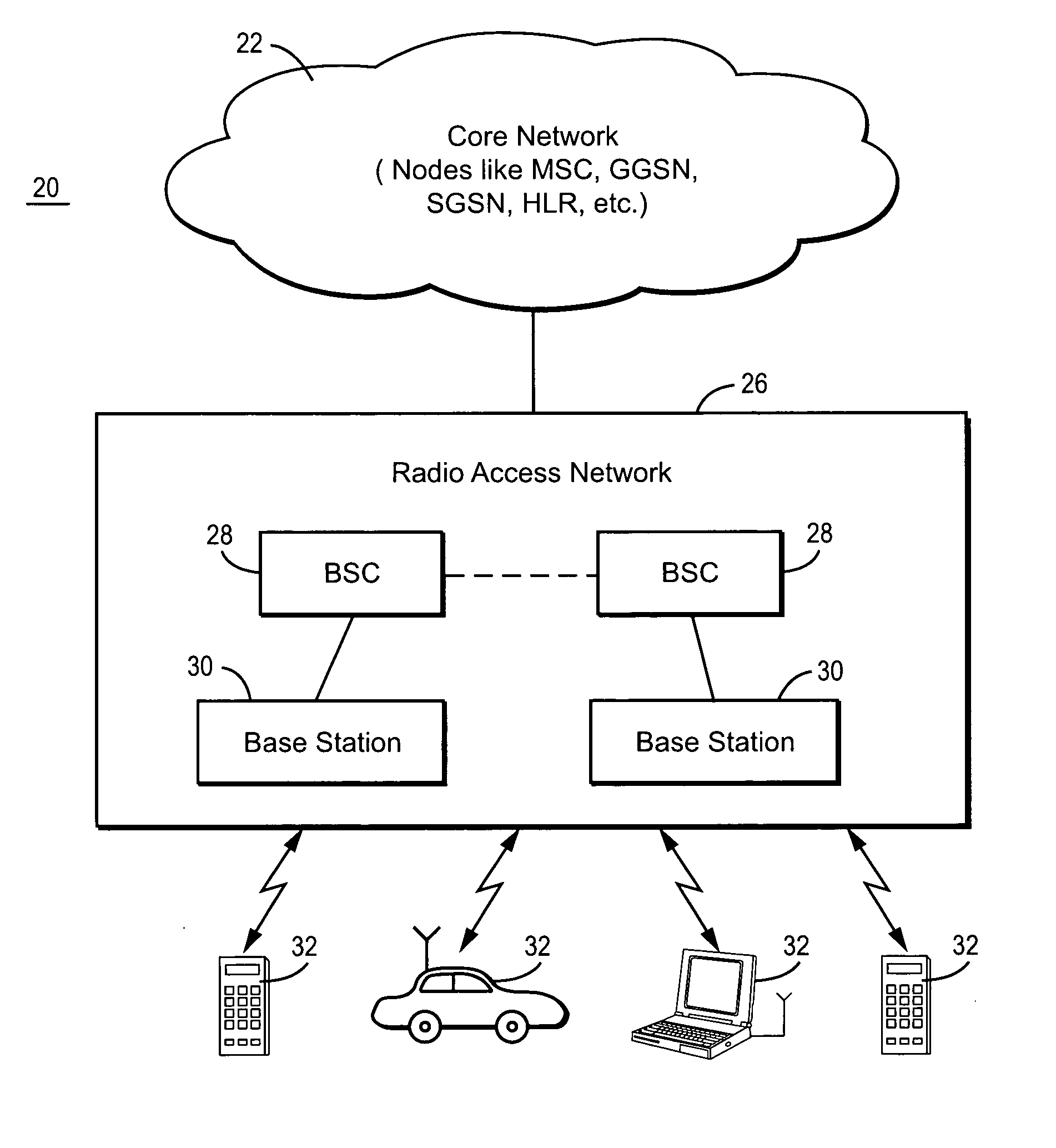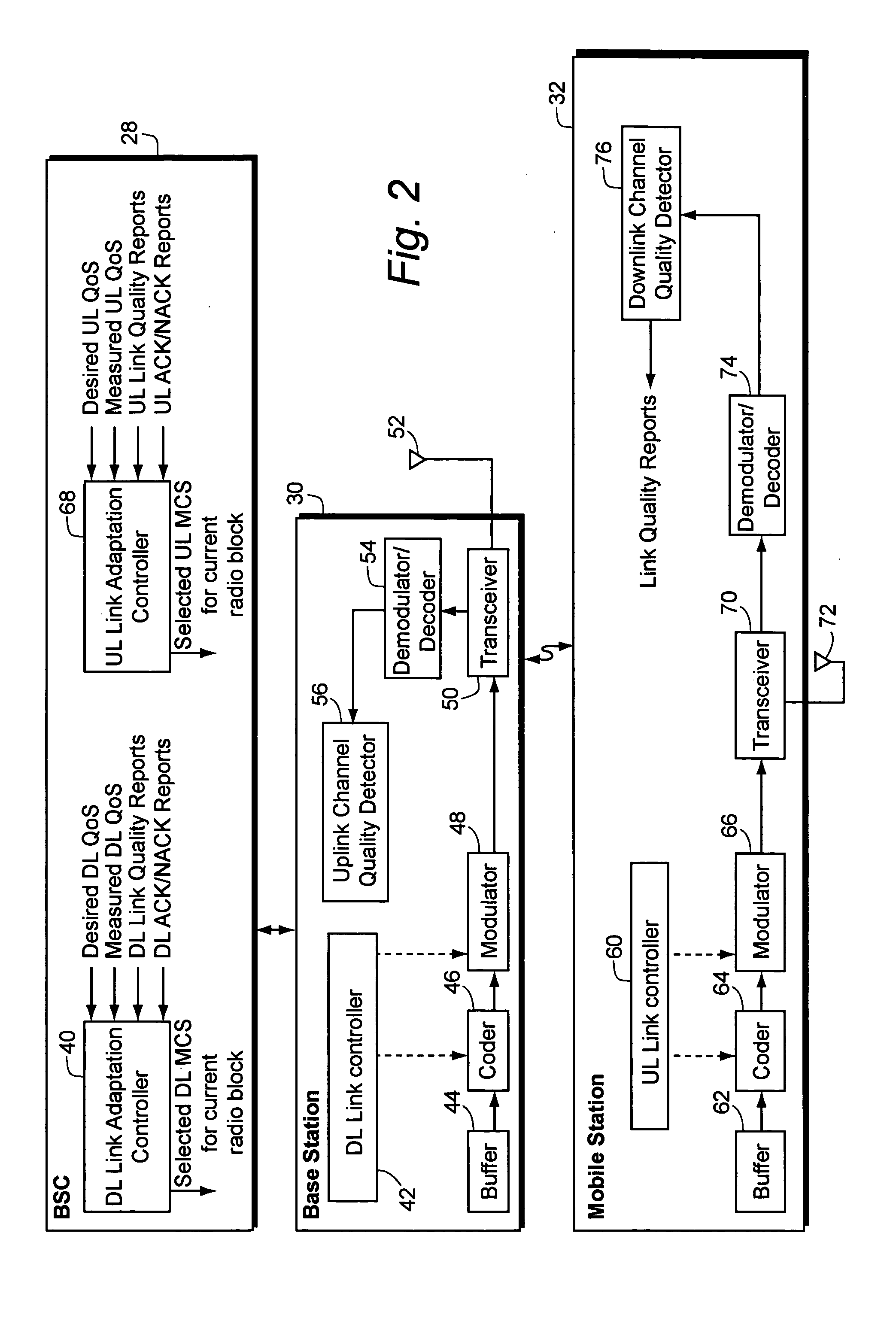Quality of service controlled link adaptation
a service control and link technology, applied in the field of adapting parameters, can solve the problems of increasing the likelihood of errors, less robustness, and inability to always determine which is more robust, so as to increase the data capacity and throughput over the radio interface, increase the decoding probability, and efficiently transmit information
- Summary
- Abstract
- Description
- Claims
- Application Information
AI Technical Summary
Benefits of technology
Problems solved by technology
Method used
Image
Examples
Embodiment Construction
[0018] The following descriptions set forth specific details, such as particular embodiments, procedures, techniques, etc., for purposes of explanation and not limitation. However, it will be apparent to one skilled in the art that other embodiments may be employed to depart from these specific details. For example, although the following description is facilitated using an example application to a certain type of mobile communication system, the present invention may be used in any wireless communications system. In some instances, detailed descriptions of well-known methods, interfaces, devices, and signalling techniques are omitted so as not to obscure the description with unnecessary detail. Moreover, individual function blocks are shown in some of the figures. Those skilled in the art will appreciate that the functions may be implemented using individual hardware circuits, using software function and conjunction with a suitably programmed digital microprocessor or general purpo...
PUM
 Login to View More
Login to View More Abstract
Description
Claims
Application Information
 Login to View More
Login to View More - R&D
- Intellectual Property
- Life Sciences
- Materials
- Tech Scout
- Unparalleled Data Quality
- Higher Quality Content
- 60% Fewer Hallucinations
Browse by: Latest US Patents, China's latest patents, Technical Efficacy Thesaurus, Application Domain, Technology Topic, Popular Technical Reports.
© 2025 PatSnap. All rights reserved.Legal|Privacy policy|Modern Slavery Act Transparency Statement|Sitemap|About US| Contact US: help@patsnap.com



